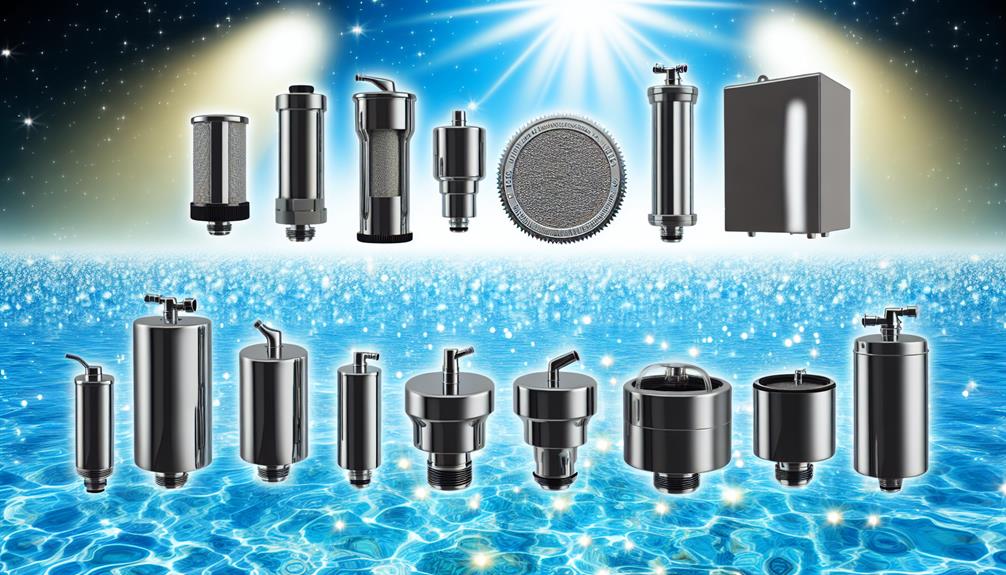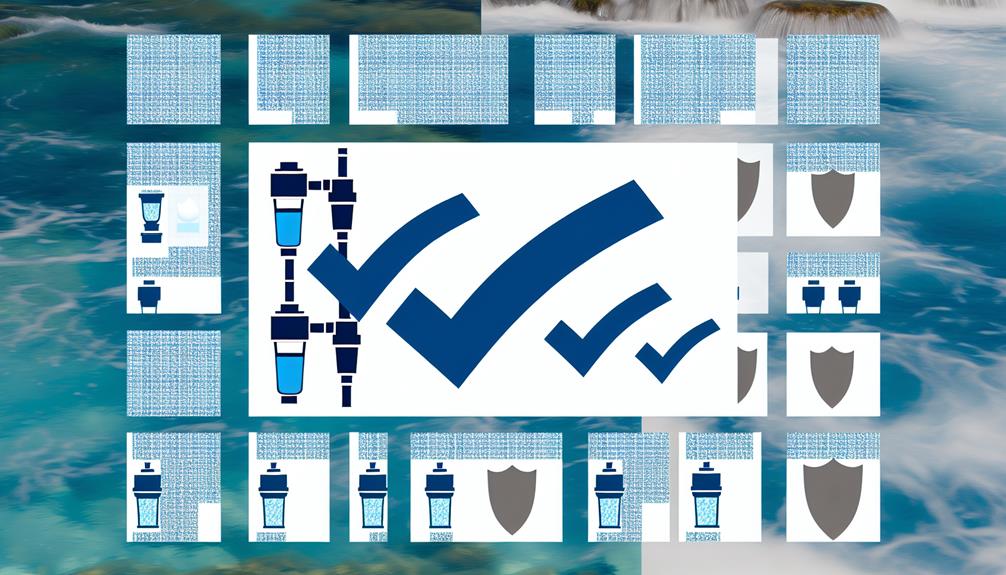While you might believe that meeting the basic requirements for workplace water quality is enough, upgrading your water filtration systems to align with OSHA standards can significantly enhance your team's health and productivity.
As an employer, you're responsible not just for providing water that meets minimum public health standards, but also for ensuring that this vital resource contributes to a safe and motivating work environment. By assessing your current water quality and understanding the specific OSHA regulations, you can identify areas where your water filtration might fall short.
Consider the advantages of implementing advanced filtration systems, such as improved taste, fewer contaminants, and increased employee satisfaction. Now, picture your team staying hydrated with clean, crisp water, thanks to a system that goes beyond compliance and into the realm of optimal workplace wellness.
The steps to achieve this might be simpler than you think, and the benefits could ripple through your entire organization. Let's explore how to make this a reality, starting with an assessment of your current water quality and the path to filtration excellence.
Assessing Current Water Quality
How does your workplace's current water quality measure up to the standards mandated by OSHA? Assessing current water quality is a critical step in ensuring the health and safety of your employees. You should conduct regular testing for contaminants and impurities as a baseline activity. This proactive approach isn't only about compliance but also about demonstrating your commitment to a safe working environment.
To accurately track changes in water quality over time, consider installing water quality monitoring systems. These systems provide real-time data, allowing you to identify and address issues promptly.
Evaluating the source of your water supply is equally important. You need to know where your water comes from to recognize potential contamination sources that could compromise its quality.
Next, assess the effectiveness of your existing water filtration systems. Are they doing an adequate job? Do they satisfy OSHA Drinking Water Requirements? If there's any doubt, don't hesitate to consult with water quality experts. These professionals can help you understand the nuances of your water supply and recommend improvements or upgrades to your filtration systems.
Understanding OSHA Water Standards
Assessing your workplace's water quality lays the groundwork for understanding how it aligns with OSHA's stringent drinking water standards. OSHA insists on the provision of potable water that adheres to public health standards for consumption by employees. This is non-negotiable to ensure the safety and well-being of everyone on the job.
Here's a distilled list of key points you must consider:
- Potable Water Provision: Provide water that meets or exceeds public health standards for drinking.
- Special Considerations: Recognize exceptions for healthcare and hazardous chemical exposure, ensuring regular water breaks.
- Emergency Measures: Have a contingency plan for disruptions in water supply to maintain uninterrupted access to safe drinking water.
- Consultation and Upgrades: Engage with OSHA-trained consultants and consider advanced filtration systems, such as Quench, to enhance water quality.
Employers are responsible for ensuring that these standards are upheld, not just for compliance, but for the health and productivity of their teams. If you're unsure about your standing, seek advice from OSHA consultation services, training providers, or trained health and safety representatives.
And remember, you can—and often should—aim to exceed these minimum requirements to foster a healthier workplace environment.
Implementing Filtration Improvements
To ensure compliance with OSHA's drinking water regulations, employers should actively implement filtration improvements that can effectively remove impurities and guarantee access to clean drinking water in the workplace. Upgrading to state-of-the-art water filtration systems, such as bottleless water coolers, is a proactive step that surpasses the basic requirements, fortifying the quality of water available to your staff.
When implementing filtration improvements, it's crucial to analyze the specific needs of your facility. Advanced systems can significantly reduce or even eliminate contaminants, ensuring that the water your employees drink is fresh and free of harmful substances. This not only aligns with OSHA regulations but also contributes to a healthier environment, which can enhance employee productivity and morale.
Employers should consider consulting with OSHA or certified training providers to navigate the complexities of workplace drinking water standards. These experts can assist in the selection and installation of appropriate water filtration system upgrades.
Monitoring and Maintenance Protocols
Employers must establish regular monitoring and maintenance schedules for their water filtration systems to ensure ongoing compliance with OSHA standards and the health of their workforce. The integrity of the drinking water system is paramount, and adherence to these schedules isn't just regulatory compliance but a commitment to employee well-being.
To maintain the efficacy of your filtration system, consider the following checklist:
- Inspection Frequency: Determine how often the Occupational Safety and Health Administration recommends inspecting different components of the filtration system and adhere strictly to these guidelines.
- Filter Replacement: Analyze the manufacturer's specifications for filter life and set reminders to replace filters within this timeframe to ensure optimal performance.
- Water Quality Testing: Implement a routine for testing water quality to detect contaminants. This should align with OSHA's permissible exposure limits and action levels.
- Documentation and Record Keeping: Keep thorough records of all maintenance activities, including dates, actions taken, and any replacements. Documentation is crucial for demonstrating compliance during OSHA inspections.
Training Employees on Hydration Safety
Understanding OSHA's hydration safety regulations is crucial for employees to recognize the importance of regular water intake and the proper use of workplace water filtration systems. As an employee, you're entitled to drinking water that meets the standards set by the Occupational Safety and Health Administration. Your employer must ensure access to drinking water from approved sources, which can include advanced water filtration systems that serve contaminant-free water.
Training on hydration safety involves learning about the risks of dehydration and the importance of taking regular water breaks, especially for those in healthcare or working with hazardous chemicals. You should be aware of your rights to adequate hydration and the protocols in place for alternative water sources during disruptions.
Remember, while OSHA regulations set the baseline for water quality and accessibility, employers can exceed these requirements. By utilizing top-tier water filtration systems, employers demonstrate a commitment to your well-being, potentially boosting hydration and productivity. As part of your training, familiarize yourself with these systems to maximize their benefits.
Stay informed and consult with OSHA or health and safety representatives if you're unsure about hydration safety practices. Your proactive engagement ensures that you're not just meeting regulatory standards but also contributing to a healthier work environment.

